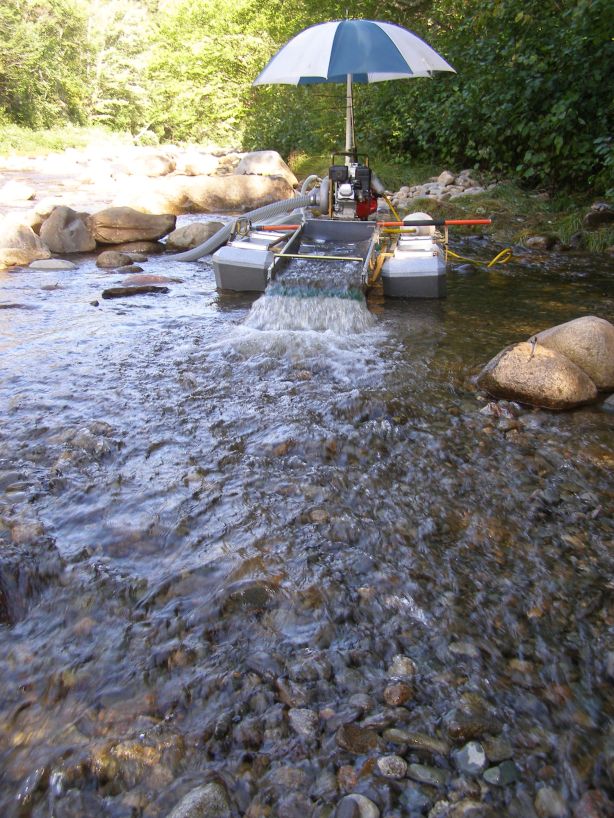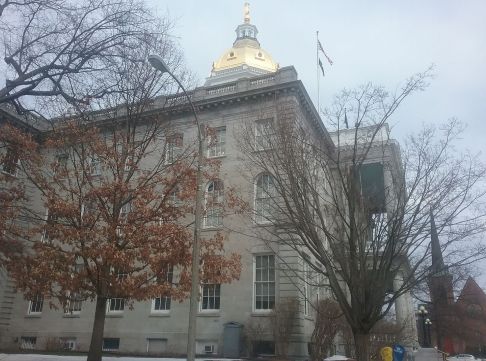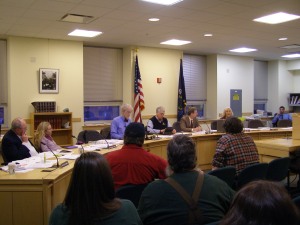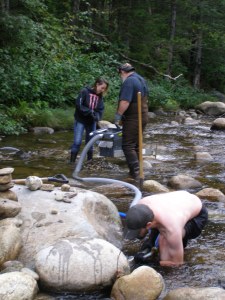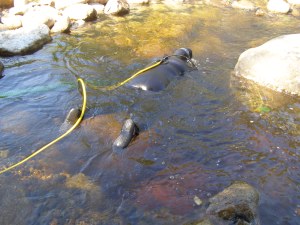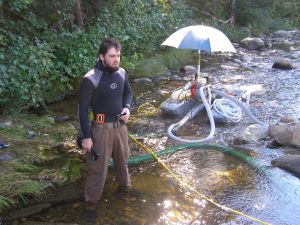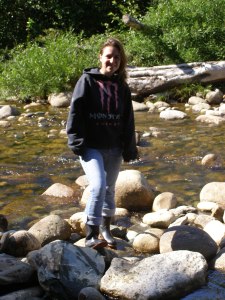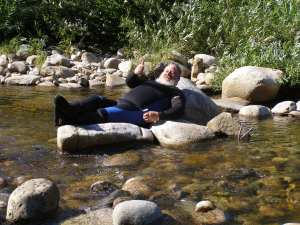I just had to share this video. This video is from a television program out of Washington D.C. that airs weekly and it highlights the best green practices from around the World. This program is called The Inside Scoop Emerald Planet and if you go to the 30 minute mark on the video you will see that in this segment which aired on March 12, 2017 highlights small scale suction dredging as a best green practice and interviews Joseph Greene. Enjoy and please share. The entire video is great!
Posts Tagged ‘gold dredging’
Small Scale Suction Dredging Considered to be Best Green Practice.
Posted: April 11, 2017 in Gold Prospecting, Prospecting Equipment, Suction Dredging, UncategorizedTags: Best Green Practices, Emerald Planet, Environment, Environmentally friendly, go green, gold dredging, Gold Prospecting, Green Technology, Joseph Greene, Mining and the environment, Small scale suction dredging, Suction Dredging, Suction Dredging and the Environment
New Hampshire Senators Walk the Talk “live Free or Die”
Posted: April 9, 2017 in Gold Prospecting, Suction Dredging, UncategorizedTags: gold dredging, Gold Prospecting, NH dredge ban bill killed in the Senate, NH Gold Prospectors Win, NH House Bill 591, NH state Legislators, prospectors rally against legislation in NH, Public Hearing
March 21, 2017, Energy and Natural Resources Senate Committee Public Hearing on House Bill 591 Relative to suction Dredging in the surface waters of the state. This bill was introduce under the premise that suction dredging was harmful to the environment and fish habitat. This bill would prohibit all motorized prospecting as well as rocker boxes. Gold prospectors assemble at the State House in Concord New Hampshire to testify in opposition to this bill, gold prospectors came prepared. Over the last several decades scientific studies have been conducted in numerous states by and or for government agencies such the US Environmental Protection Agency, Department of Fish and Wildlife of California and Washington State just to name a few, and peer reviewed. There were a number of these studies presented to the Committee as well as summaries of these studies prepared by two respected Scientist in this field. All of these studies come to the same conclusion that small scale suction dredging’s impact on the environment and fish habitat is less than significant. The Army Corps of Engineers states that any dredge less than a 6″ nozzle size impact on the environment is “De Minimus”. There was a lot of great testimony from prospectors you can hear the entire hearing here: Senate Committee Public Hearing HB 591.
If you can’t play the hearing here is the summary report of the hearing: Summary Report Public Hearing the audio is far better since this is just a summary.
I commend these Senators for their integrity and honesty, they weighed the facts and based their decision on the facts presented. Their recommendation to the Senate was that HB 591 was inexpedient to legislate. On March 29, 2017 the senate met and voted on HB 591 based on the recommendation of the Energy and Natural Resources Committee and HB 591 was officially killed.
Legislation should be based on facts, scientific, peer reviewed facts and not on assumptions, opinion or conjecture or even lies. Even the opinion of a professional such as a college professor or a biologist in the field, while this opinion may be the basis of a hypothesis, until that hypothesis is proven by scientific study and peer reviewed, is still nothing more than an opinion. The Senators of New Hampshire based their decision on the truth, unlike legislators of other states that pander to special interest groups, I will leave it up to the reader as to why they would pander to these special interest groups.
The Senators of New Hampshire give me hope that our form of government still works the way it should, with integrity and honesty, at least in one state. LIVE FREE OR DIE!!!
Live Free or Die but not in New Hampshire, House Bill 591
Posted: March 2, 2017 in Gold Prospecting, Suction DredgingTags: Clean gold, gold dredging, Gold Prospecting, Live free or die, New Hampshire, New Hampshire HB591, Suction dredge ban
As many of you know I am a gold prospector and if you don’t know, you know it now. I enjoy the great outdoors by prospecting for gold, I would hike miles and miles, over mountain ranges just to get to a good gold prospecting location. For me to hike I need a destination and a purpose. The same with camping, I will camp in the worst weather, for days and even weeks for gold prospecting. Gold prospecting is my serenity, just like fishing is to some, or hunting to others it is my passion. I like to prospect in New Hampshire, and I love to dredge for gold. I love New Hampshire, especially the state moto “live Free Or Die”. This is the state I was born in, I call New Hampshire my home state, most of my relatives still live in New Hampshire, my ancestors settled in New Hampshire while it was still the Massachusetts colony, one day I plan on going home. I want to spend my retirement in the mountains prospecting and dredging for gold.
Earlier this week I read an article in the Concord Monitor online titled: Bill would halt dredging machinery in N.H. gold prospecting , my blood pressure sky rocketed and I thought I was going to have a stroke because what I read was a proposed bill, HB 591 to ban gold dredging in New Hampshire. The entire bill is based on misconceptions about small scale suction gold dredging, possibly even lies. What happened to live free or die? There goes my whole plan for retirement. I would like to clear the air on some of these misconceptions about gold dredging especially those listed in this news article.
“There’s a surprising amount of damage that can be done by one of these things,” Claims Rep. Lee Oxenham, a Plainfield Democrat, which by the way indroduced and sponsored this bill. What I want to know is what is this surprising amount of damage. What is the merit for this bill? I don’t want to hear opinion and conjecture or flat out lies, show me the data that supports your claim. what I need to see are studies and or reports that have been peer reviewed, performed on the practice of small scale suction dredging because the ones that I have read prove otherwise.
It is obvious that who ever provided the information for this article knows very little to nothing about the subject of gold prospecting , gold dredging or anything associated with the practice thereof. The article states and I quote ” The bill also would outlaw similar processes and technologies with names like “rocker box” and “highbanking,” which suck up stones and water from steambeds via small gasoline-powered pumps and filter them in some way to help the users spot tiny flecks of gold that might be there.” Rocker boxes and highbankers don’t suck up stones you shovel into them. Rocker boxes don’t even have a motor on them it is a hand operated device that you pour water in with a pail. How does legislation get introduced on anything without even the basic facts even being known and better yet how does it pass a House vote? Something is wrong with our government.
Here is another quote from the article: “New Hampshire Department of Environmental Services says these processes stir up too much silt and mud, “releasing fine sediments back into the stream” that can harm life in the waterway.” Flat lazy water is where mud and silt covers the bottom, rivers on flat land, swamps, ponds and lakes is where you would find this condition, this is not at all ideal for gold dredging. We don’t dredge here. What is ideal is a river that drops at least 10 feet per mile which means faster moving water, silt and mud does not settle in these areas for us to dredge up, we need to dredge in gravel, with mostly rocks (cobble) and boulders where only the heavy materials, minerals like magnetite, hematite, garnet and gold will settle, the lite materials have already been washed away by nature.
Another quote from the article:
“The turbidity can go for thousands of yards – it’s not just localized,” said Oxenham. “It’s disruptive for fish, insects, the benthic community in all its forms.” There are occasions where you may dredge into a pocket of clay and there is a moment of noticeable turbidity, it is not constant, travels about 50 to 100 yards and 100 is stretching it, not thousands. Notice in the picture below how clear the water is, this is typically how it runs.
Yet another quote: “Further, she added, the noise and smell of the machines “can drive those searching for the unmediated, unspoiled experience of our natural wonders out of the state, along with their tourist dollars.” Yes there is the noise of a small engine, the size of a lawn mower engine, a push mower not a riding one. What smell? This makes it sound like we are running a paper mill out here and we are driving all the tourist away, simply not true. We have just as much right to the wild as a hiker or any one else who is recreating out in the state of New Hampshire. I am spending my money too, on campgrounds or other lodging, groceries, restaurants, gas stations, ice cream stands not to mention the $50.00 I pay for the permit to dredge.
New Hampshire residents should be outraged by this legislation because it is all based on fiction and if this is how legislators deal with a matter such as this imagine how legislation is passed on matters that you really care about. Maybe they should focus their efforts more on things like the heroin epidemic in the state.
If you like to prospect for gold and dredge in New Hampshire then please stand up for your rights and attend the public hearing that is going to be held by the Energy and Natural Resources Committee which the date and place is yet to be determined. You should be able to find the date here when it is determined: http://www.gencourt.state.nh.us/senate/committees/legislation/committee_billstatus.aspx?l=368&cc=S38&r=1
People of California vs Rinehart
Posted: September 28, 2014 in Gold Prospecting, Suction Dredging, UncategorizedTags: California drdeging ban moratorium, Gold, gold dredging, Gold mining, People of California vs Rinehart, Prospecting
Here is the information on the case of People of California vs Rinehart from a letter to Jerry Hobbs of Public Lands For The people.
The following is an Email I received from Dave McCracken which explains what you as a small scale miner can do to help. If you ever want to get back in the water with your dredge in the state of California I strongly suggest you follow the instructions:
Dear John Dorval,
I am sorry to burden you with this request. I would not bother you
unless it was of the utmost importance. But if we cannot persuade
California’s Third Appellate Court to publish its recent Decision
overturning the conviction of Brian Rinehart, we will not be able to
make use of the stunning victory we have all worked so hard for as we
move forward with future litigation.
I am told that the Appellate Court can be persuaded to publish a
Decision if enough of the public demonstrates an interest in the case.
Therefore, we need as many supporters as possible to send a letter to
the Appellate Court in California. Here follows a sample letter from
which you can copy and paste to create your own letter:
http://www.goldgold.com/Ltr-re-publication-of-opinion-9-25-14.html
You are welcome to provide different information in the second
paragraph concerning who you are and your interest in the case.
Even if you reside outside of California, it is important to make
it clear that you have a personal mining interest inside of California.
Please note that in addition to mailing the letter, you are required
to mail copies to the parties on the service list for the case. So
the proof of service form must be filled in, executed with your signature,
and mailed as a second page to your request.
Your request must be received by the Court on or before 12 October.
Thanks very much for making the effort on this. All of our many years of
hard work and investment will be solidified into an important legal
milestone if we can just get this Decision published.
If the Decision is not published, we will basically be starting over from
the beginning! I don’t know about you guys, but the prospect of that reality
makes me very tired!
Sincerely,
Dave McCracken
The New 49’ers Legal Fund
The New 49er’s, 27 Davis Road, Happy Camp, California 96039, USA
Tennessee to Regulate Propectors Out of the Water
Posted: April 19, 2014 in UncategorizedTags: Appalchian prospecting, Coker creek GPAA, Coker Creek Tennessee, East coast gold prospecting, gold dredging, Gold Prospecting, Gold Prospecting Ban, Tennessee Environment and Conservation Final Draft of Recreational Prospecting Permit, Tennessee Gold Prospecting, Tennessee Prospecting ban, Tennessee Prospecting Permit
The Tennessee Department of Environment and Conservation are going to regulate prospectors out of the waters of Tennessee, their final draft of the 2014-15 Recreational Prospecting Permit is out. Here is the link to the final draft: 2014-15 General Permit for Recreational Prospecting. If you find these regulations to be heavy-handed, overbearing and unfair as we do then you can take action. Here is the link for the Notice of public hearing: Public Notice of Hearing . If you send an E-male make sure you put Gold Prospecting Final Draft in the subject line or else your testimony will end up in the trash.
Coker Creek GPAA is on the frontlines of this one and you can get more information on how you can help by visiting their forum at: Coker Creek GPAA Forum . Scroll down and you will see information for the General Permit. There is a petition that you can sign as well so check it out and please act fast, you have until May 15, 2014 to do something. It would be most helpful if you were to contact the Senate and Congress of Tennessee, all the contact information is on the Coker Creek Forum. Just remember to be polite and if you have scientific data please include that in your testimonies so that it will be on public record. There are plenty of scientific facts out there that are from studies that have been performed by government agencies on the effects of small-scale suction dredging and reports that have been written based on the findings of these studies that detail small-scale suction dredging has minimal impact on the environment, please use them. This is an example of what is out there: USACE, 1994, Small scale suction dredging is deminimis . Can you argue that the Army Corps of Engineers is wrong, they don’t know what they are talking about? Knowledge is power so use it!!!
Suction Dredge Waste Removal Survey
Posted: March 22, 2014 in Gold Prospecting, UncategorizedTags: Claudia Wise, Environment, gold dredging, Gold Prospecting, Joseph Greene, lead, mercury, prospectors, river
Claudia Wise and Joseph Greene are collaborating on a project and they need your help. I received the following survey from Claudia Wise, you can email the photos to me and I will forward them to Claudia. Thank you very much.
Please send photos and information to: prospectorjack919@gmail.com
March 14, 2014
Dear Miners,
Joe Greene and I are working on a small scale gold suction dredge, stream waste products removal survey report. We need to ask all miners for any good pictures they have, of waste they have removed from our waterways.
This waste can include but is not limited to such items as:
Fishing weights, Lures, line
Oars
Beer and Water bottles and cans
Sunglasses, Sun visors and Hats
Golf Balls
Iron Waste:
Nails, screws, bolts, spikes
Horseshoes
Car parts
Construction material
Tools Etc.
We ask that you also include:
Type of waste (If you know)
Weight of each type
Waterway it was removed from
State you worked in
Waterway waste removed from (need NOT to be specific to location, just name general waterway)
Include your contact information so Joe and I can get ahold of you if we have questions. Your contact info will not be published or shared otherwise.
If you could expedite this information to us it would be greatly appreciated. Please forward this request on to other miners.
Thanks you for your help with this project,
Claudia Wise
Physical Scientist
USEPA (ret)
Maine LD 1671 (SP 646) “An Act To Prohibit Motorized Recreational Gold Prospecting in Certain Atlantic Salmon and Brook Trout Spawning Habitats”
Posted: February 22, 2014 in Gold Prospecting, UncategorizedTags: Byron Maine, gold dredging, gold prospecting. motorized gold prospecting, Maine, Maine gold prospectors, Maine LD 1671 SB 646, Maine Legislation, recreation, recreational prospecting, Rocks and Minerals, suction dredge
Maine LD 1671 (SP646) “An Act To Prohibit Motorized Recreational Gold Prospecting in Certain Atlantic Salmon and Brook Trout Spawning Habitats”
Presented by Senator BOYLE of Cumberland.
Cosponsored by Representative McCABE of Skowhegan and
Senators: MAZUREK of Knox, PATRICK of Oxford, SAVIELLO of Franklin,
Representatives: FARNSWORTH of Portland, GATTINE of Westbrook, ROCHELO of
Biddeford, SANBORN of Gorham, THERIAULT of Madawaska.
This new legislation is not necessary due to the fact that last year legislation was introduced and passed to impose a dredging season from June 15 to September 15. With this law in effect the spawning period for trout and salmon are protected. This should be enough right? Wrong. Trout Unlimited seems to think otherwise, they are the driving force behind this legislation.
On January 27, 2014 there was a public hearing on LD 1671 before the Environment and Natural Resources Committee at the Cross building in Augusta Maine. John Clark (Hillbilly John) and I were in attendance along with members of Central Maine Gold Prospectors, Prospectors from Maine, New Hampshire, Vermont, Connecticut and New York.
Testimonies started with those in support of LD 1671, each person was given 3 minutes to speak for a 30 minute period and then those in opposition had the floor for the same amount of time and back and forth until every ones testimony was heard. A lot of the testimony I heard from those that support this legislation was based on opinion and conjecture. Laws should be based on facts not on opinion and conjecture.
Over the past several decades there have been studies performed and reports written by professionals on the effects of small scale recreational gold suction dredging. Many of which were presented to the Environment and Natural Resources Committee for their review.
Here are some excerpts from Fact Sheet June 9, 2013 Written and prepared by:
Claudia Wise, Physical Scientist (USEPA retired), Miner
Joseph Greene, Research Biologist (USEPA retired), Miner
Guy Michael, Miner
Tom Kitchar, President, Waldo Mining District
Scientific studies have identified both detrimental and beneficial effects from this level of mining.
Dozens of studies on the environmental effects from small scale mining, and in particular “in-stream suction dredge placer mining”, have been performed by various agencies since the 1980’s, including the U.S. Environmental Protection Agency, U.S. Army Corp of Engineers, U.S. Geological Survey, and other federal and state agencies and universities at the cost of millions of dollars. To date, other than a few short-term and highly localized detrimental effects that are already mitigated to the point of being “less than significant”; the only other effects studies identified were beneficial to fish, the aquatic habitat, and the economy.
ENVIRONMENTAL IMPACTS
Relevant Science showing miniscule effects:
There have been a number of studies on the effects of small scale gold suction dredge mining that have concluded that these operations have impacts on the environment that are temporary, highly localized, and less-than-significant:
-
1994, The Alaska District of the U.S. Army Corps of Engineers issued Special Public Notice 94-10, which concluded that, the effects from small suction dredges and hand operations were de minimus and did not require Army Corp permitting;
- 2004,The Alaska District of the Army Corps issued Special Public Notice 2004-06, which restated that these placer mining activities still have “de minimus impacts” on the aquatic environment:
- 1994,In an Environmental Impact Report, the California Department of Fish and Game, reached the conclusion that suction dredge mining had a less than significant impact on the environment;
- 2012,The California Department of Fish and Wildlife, under a court order, completed another Environmental Impact Report on small-scale gold suction dredging, at a cost to the state of $1.2 to $1.5 million dollars. The overall conclusion was that the environmental impact from operation of these small scale dredges was less-than-significant for 56 of the 60 factors reviewed;
- 2001, The Siskiyou National Forest, Oregon Draft Environmental Impact Report, Suction Dredging Activities are less-than-significant;
- 2004, The Clearwater National Forest, Idaho completed the draft Environ-mental Impact Statement for Small-Scale Suction Dredging in Lolo Creek and Moose Creek Clearwater and Idaho Counties. The report stated that “EPA generally supports the terms and conditions for dredging and we believe they are designed to protect fish habitat and seem to minimize the potential to damage stream channels and banks.”, which supports a less-than-significant outcome;
- 2012, Wallowa-Whitman National Forest, Oregon FINAL Supplemental Environmental Impact Statement reached the conclusion that suction dredge mining had a less than significant impact on the environment; and,
- 2013, U.S. Environmental Protection Agency Biological Evaluation Small Suction Dredge Placer Mining in Idaho reached the conclusion that suction dredge mining would have a less than significant impact on the environment.
There have also been a number of other more recent reports with the same conclusion, starting with:
- Results from the 1992 Chugach National Forest, Alaska Report of Water Quality Cumulative Effects of Placer Mining which stated that, “The results from water quality sampling do not indicate any strong cumulative effects from multiple placer mining operations within the sampled drainage” (Huber and Blanchet).( NOTE: The operations studied here were large on-stream and off-stream commercial operations.)
- In 1999 the U.S. Environmental Protection Agency reported the results of a cumulative field study evaluating the performance of 10, 8, and 4 inch gold dredges and concluded environmental impacts from these operations were less than significant (Royer et al., 1999).
- Bayley (OSU), 2003, (for Siskiyou N.F., Oregon) Response of fish to cumulative effects of suction dredge and hydraulic mining in the Illinois subbasin concluded,”The statistical analyses did not indicate that suction dredge mining has no effect on the three responses measured, but rather any effect that may exist could not be detected at the commonly used Type I error rate of 0.05.”
All of these reports agree that the effect of small-scale gold suction dredging on the environment is less-than-significant, minimal, or immeasurable.
Net Environmental Benefits of Small-scale Suction Dredging: These important studies of small-scale suction dredge operations show impacts on the environment have a less-than-significant footprint. Furthermore, they make note of beneficial factors that create an overall net benefit to some areas. These factors need to be taken into consideration when interpreting suction dredge activities and further incorporated into best management practices agreements.
Experts agree that fish survival improves under moderate turbid conditions (25 NTU):
- Results of the Gregory 1993 report notes that any reduction in feeding efficiency of fish may be offset by reduced risk of predation at moderate levels of suspended sediment.
- CH2M HILL in 2000, added to that result showing that elevated total suspended solids (TSS) conditions, similar to turbidity plumes created from dredging activity, have been reported to enhance cover conditions, reduce piscivorous fish/bird predation rates, and improve survival.
- Stern 1988, stated that, “Pools created by abandoned dredger sites can provide holding and resting areas for juvenile and adult salmonids”.
- Harvey 1991, studied fish size and habitat depth relationships in headwater streams. During times of low flow in a river or stream, increased water depth can provide a refuge from predation by birds and mammals.
- Nielsen 1994, examined excavations from dredging operations finding they can result in temporarily formed pools or deepen existing pools, which may improve fish habitat. Deep scour may intersect subsurface flow creating pockets of cool water during summer, which can provide important habitat for fish
- 2001, Siskiyou National Forest, found if excavated pools reduce pool temperatures, they could provide important coldwater habitats for salmonids living in streams with elevated temperatures.
- In1999, the U.S. Environmental Protection Agency reported the results of a cumulative field study evaluating the performance of 10, 8, and 4-inch gold dredges. The findings showed an increase in macroinvertibrate density and improved diversity in mined areas.
- In 2010, The American River Spawning Gravel Supplemental Environmental Assessment (EA) points to the benefits of additions of spawning gravels even coming from an outside source. The addition of spawning gravels are to increase and improve Chinook salmon and steelhead spawning and rearing habitat.
- Again in the 2011, American River Spawning Gravel EA; the supplemental Environmental Assessment Report supported the previous EA reporting benefits of supplementing spawning gravels
Tailings from small-scale suction dredge mining provide excellent spawning gravel. Suction dredging breaks up compacted steam beds; the gravels are dispersed by the high stream flows, making up suitable spawning gravels each year. If insufficient substrate is available Salmonids are left with the choice of spawning over and destroying previously built redds, or using cleaned dredge tailings.
Additional benefits of small-scale suction dredge mining include:Measureable improvement in water quality due to removal of wastes left by other users of the waters or that have eroded into the waterways. 100’s of pounds of lead fishing weights, bullets, water bottles, sunglasses, car debris, nails, broken glass, etc. are removed from our waterways and camping and recreational sites by miners every year.
Laws should be based on facts not on opinion and conjecture.
Here is a list of studies and reports that have been compiled over years of research that can be referenced available to all:
CDFG, 1997. draft Environmental Impact Report: Adoption of Amended Regulations for Suction Dredge Mining. State of California, The Resource Agency, Department of Fish and Game
Cooley, M.F. 1995. Forest Service yardage Estimate. U.S. Department of Agriculture, U.S. Forest Service, Siskiyou National Forest, Grants Pass, Oregon.
Griffith, J.S. and D.A. Andrews. 1981. Effects of a small suction dredge on fishes and aquatic invertebrates in Idaho streams. North American Journal of Fisheries Management 1:21- 28.
Harvey, B.C., K. McCleneghan, J.D. Linn, and C.L. Langley, 1982. Some physical and biological effects of suction dredge mining. Lab Report No. 82-3. California Department of Fish and Game. Sacramento, CA.
Harvey, B.C. 1986. Effects of suction gold dredging on fish and invertebrates in two California streams. North American Journal of Fisheries Management 6:401-409.
Hassler, T.J., W.L. Somer and G.R. Stern. 1986. Impacts of suction dredge mining on anadromous fish, invertebrates and habitat in Canyon Creek, California. California Cooperative Research Unit, U.S. Fish and Wildlife Service, Humbolt State University. Cooperative Agreement No 14-16-0009-1547.
Huber and Blanchet, 1992. Water quality cumulative effects of placer mining on the Chugach National Forest, Kenai Peninsula, 1988-1990. Chugach National Forest, U.S. Forest Service, Alaska Region, U.S. Department of Agriculture.
Lewis, 1962. Results of Gold Suction Dredge Investigation. Memorandum of September 17, 1962. California Department of Fish and Game, Sacramento, CA.
North, P.A., 1993. A review of the regulations and literature regarding the environmental impacts of suction gold dredging. U.S. Environmental Protection Agency, Region 10, Alaska Operations Office. EP 1.2: G 55/993.
Prussian, A.M., T.V. Royer and G.W. Minshall, 1999. Impact of suction dredging on water quality, benthic habitat, and biota in the Fortymile River, Resurrection Creek, and Chatanika River, Alaska, FINAL REPORT. US Environmental Protection Agency, Region 10, Seattle, Washington.
SNF, 2001. Siskiyou National Forest, Draft Environmental Impact Statement: Suction Dredging Activities. U.S. Department of Agriculture, U.S. Forest Service, Siskiyou National Forest, Medford, OR.
Somer, W.L. and T.J. Hassler. 1992. Effects of suction-dredge gold mining on benthic invertebrates in a northern California stream. North American Journal of Fisheries Management 12:244-252
Stern, 1988. Effects of suction dredge mining on anadromous salmonid habitat in Canyon Creek, Trinity County, California. M.S. Thesis, Humbolt State University, Arcata, CA.
Thomas, V.G. 1985. Experimentally determined impacts of a small, suction gold dredge on a Montana stream. North American Journal of Fisheries Management 5:480-488.
US EPA, 2001. Mercury Recovery from Recreational Gold Miners.
Wanty, R.B., B. Wang, and J. Vohden. 1997. Studies of suction dredge gold-placer mining operations along the Fortymile River, eastern Alaska. U.S. Geological Survey Fact Sheet FS-154-97.
Gluttons For Punishment (video footage)
Posted: December 6, 2013 in UncategorizedTags: Appalachian Prospectors, gold dredging, Gold Prospecting, Swift River, Western Mountains of Maine
This is video that Melissa shot the day after all the rain. It was hard to get video and pics because the cameras were all wet. Even the waterproof video camera was ruined by all the water. All in all it was a great time.
Gluttons For Punishment
Posted: December 6, 2013 in Gold Prospecting, Mineral prospecting, UncategorizedTags: Appalachian Prospectors, family fun, Gold, gold dredging, Gold panning, Gold Prospecting, Maine, placer gold, Prospecting, Swift River Maine
Hillbilly John and I made our usual trek northward to the Western Mountains of Maine on the first week of September which has been customary for us for over the past several years. This year Hillbilly John’s daughter Melissa and her boyfriend Mike accompanied us. It was their first time out dredging for gold. It was also their first time visiting Maine. The weather was nice, it was warm and humid and it looked like we were going to have some nice weather for the labor day weekend. We arrived in the later part of the afternoon, we set up camp, jumped on the quads and headed out to the spot we planned to dredge in to look it over and put together a solid plan for the following day. We had a location picked out that we have dredged before that we had gotten some nice gold out of. We had been driven out of the spot before by the weather. We get to the trail and there is this sign posted on a tree that reads no all terrain vehicles beyond this point. What a bummer now we have to make a new plan. I had another location in mind, something that was relatively simple to get to. This place was down river on the East Branch of the Swift River. The first spot we looked at was reasonable. The following day we got up had some breakfast, packed up the 2 and a half inch dredge/ high banker combo and hit the trail, it was time to test the location out. We got there set up the equipment and we were Prospecting.
The weather was with us, some clouds passed over but over all it was a sunny day, we dredged until late afternoon, it was time for a clean up. We shut the dredge down and started washing the concentrates into a container, I looked down at the ribbed matting and I saw gold, so far so good. We cleaned all the concentrates out of the sluice and then we panned it down, we found numerous flecks of gold in each pan. The spot looked really good. We went back to camp had some dinner and then started getting the gear ready for the following day, we started assembling the 4″ dredge by putting the pontoons on the frame. We loaded up the trailer and prepared for an early start in the morning. Before turning in for the night it started to sprinkle and then it stopped. We turned in and before I fell asleep it started sprinkling again and I could hear thunder, and then came lightning. I could see it’s flash through the ceiling of the tent, which I find to be very peaceful and calming. I drifted off to sleep later to be awakened by the sound of pouring rain and thunder right over head. It must have been raining for a while at this point because when I went out of the tent to use the bathroom I stepped into ankle deep water just outside the door. I went back in to sleep, but just lay there for a while thinking so much for the weather being with us, after all this is the first week of September in Maine. The next thing you know I am opening my eyes and it is starting to get light and the good news is I don’t hear rain on the roof of the tent. I got up and got dressed and went outside, it was foggy but at least it wasn’t raining. Hillbilly John was up and Melissa and Mike were still in their tent. I got some coffee on and started to fry up some bacon. It wasn’t long after that that Melissa was up and out of her tent. The eggs were done and breakfast was now ready and Mike finally joined us. If you are going to be dredging you need a good solid breakfast, you need lots of energy to move rocks and boulders. We saddle up and headed out with Hillbilly John leading the way towing the trailer with his quad, Melissa and Mike were in the middle in the Jeep and I was in the rear making sure we didn’t lose anything. We had about a 3 mile commute to the parking area where we would have to leave the trailer and the Jeep and we would have to make several trips to get all of our equipment in on a narrow trail. Once we got every thing in we had a rather small ledge that we had to lower everything down to the river. Hillbilly John and I finished assembling the 4″ dredge and then I assembled the 2 1/2″ dredge for Melissa and Mike to use. After getting the equipment set up we donned our wet suits and we were ready to go. We worked together as a team, I was on the 4″ nozzle while Mike was on the 2 1/2″. Melissa tended the sluice for Mike and Hillbilly John was tending for me and moving rocks and boulders. We were working around a good size boulder. I worked the left and the down river side while Mike worked the right side. I could tell by the material that this location had been dredged before, the question was how deep and how far was it to bedrock or the clay layer. After about 1 1/2 to 2 feet I started to hit hard pack which was a good sign to me. I was excited and working like a mad man trying to get the rocks out of the way. I was throwing the rocks to my left, my peripheral vision is impaired due to my mask and I didn’t see Hillbilly John walking into my line of fire, I threw this rock about the size of a base ball and hit him right square in the bread basket. It’s a good thing he had on his wet suit it gave him some protection. Mike and Melissa were doing great for their first time out; they made a good team. The weather wasn’t to bad, there were scattered showers throughout the day with some patches of sun and it was fairly warm. We prayed that the weather would be with us, if it just rained at night I would be happy.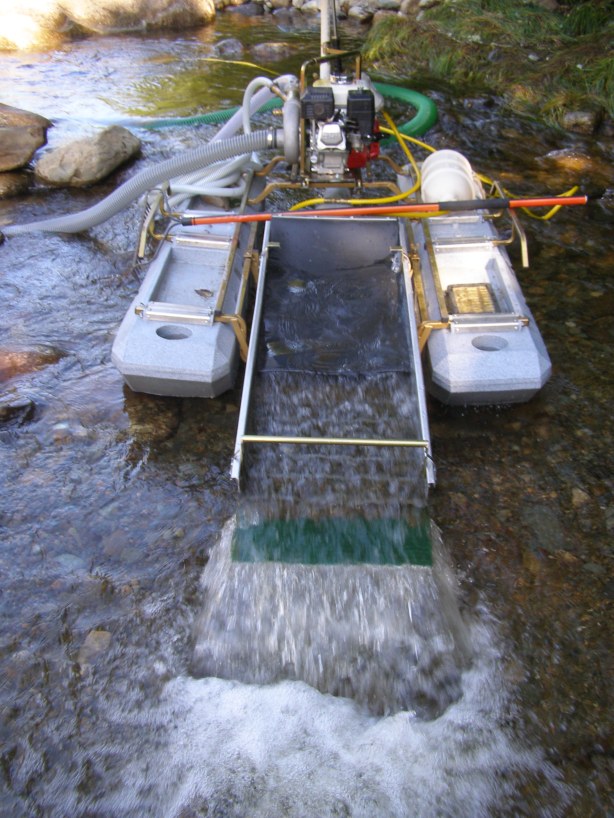 We worked at a frantic pace all day, it was getting late and it was time for a clean up. We were quite eager to see what we had in the box, we ran the dredge for a few minutes clean just to wash the material a little better, just to get rid of some of the junk. We then throttled down on the dredge, Hillbilly John got in position with the plastic bus pan to catch our concentrates, I raised the rubber mat at the top of the sluice box and removed the first set of riffles. To my surprise I saw the most gold I had ever seen come across the ribbed matting. Man you got to see this I said to every one else, look at this we got gold!!!! We got us a good spot. We picked all the gold off that we saw with tweezers and continued our clean up, grabbing up every bit of gold we could before it hit the end of the sluice. We finished the clean up and panned down the concentrates. We found gold in just about every pan, the gold was small but we had a lot. If we are getting this on the surface just imagine what we will get as we get deeper. We had spent about 14 hours on the river that day and then the clouds rolled in. It was nearly dark by the time we got back to the camp sight. We ate dinner and then we relaxed by the campfire, it started to rain. We took cover in our tents and went to sleep. I awoke several times throughout the night to the sound of pouring rain. Day light came and it was still raining. We were huddled under the canopy hoping for the rain to stop but it wasn’t letting up so we decided to go into town and get breakfast, we would at least be dry for a little while and get a good hot breakfast. Before going into town we went to Coos Canyon Rock and Gift, Hillbilly John wanted to get a spiral pan to help us in our clean out efforts, hand panning is very labor intensive. We got out of the car and we could hear the river raging through the canyon. We had gone in to see Rosey, she was out of new spiral pans but she had a used one out back. Hillbilly John said he was interested in seeing it, She went and got it brought it out, it was an older model but in very good shape the battery was dead so Hillbilly John said that we will come back later and if it works he would buy it. We went into town and went to a local diner, breakfast was great we were dry and warm and I didn’t have to cook. Afterwards we went to Wal – Mart I wanted to get a rain suit so I did, Hillbilly John got a battery charger, he figured he would need it for the spiral wheel. We got back to Byron, still raining, we could hear the river raging from our camp site Hillbilly John thought that we should go and check on our equipment I agreed an put on my new rain suit . We took the quads, the rain was pouring down I could barely see with the rain hitting me in the face but at least the rain suit was working that was $14.00 well spent. I was worried the whole way there wondering what we were going to find or not find. Fortunately the day before we had pulled the 4″ dredge up onto dry land and securely tied it off because the weather was looking pretty ominous. The other dredge was not tied and the motor was in a plastic Rubbermaid bin on the bank of the river. We got there and I was very hesitant about looking. Hillbilly John was the first on the scene and I had to ask how did it look, looks like everything is there he replied so I then looked for myself. The river was up on the bank and it had washed the 4″ out into the river and thank GOD we tied it off or else we probably would never had found it. The river was just inches from the Rubbermaid bin. We hauled the 4″ back in to land and drug it farter up the bank and re-tied it. Everything else we moved farther up on the bank. We were lucky again, it seems to be the same old story here, we are usually short on time, every day that we have really counts, when we lose a day or two it really puts a damper on our plans. But this is all part of the adventure and we are gluttons for punishment we will be back for more! Later on that day we went back to Rosey’s and Hillbilly John purchased the spiral wheel. We went back to the campground and it was virtually empty the rain had driven everyone out, we were talking with the owner of the campground and he told us that a couple of prospectors had lost their dredges and they hadn’t been found.
We worked at a frantic pace all day, it was getting late and it was time for a clean up. We were quite eager to see what we had in the box, we ran the dredge for a few minutes clean just to wash the material a little better, just to get rid of some of the junk. We then throttled down on the dredge, Hillbilly John got in position with the plastic bus pan to catch our concentrates, I raised the rubber mat at the top of the sluice box and removed the first set of riffles. To my surprise I saw the most gold I had ever seen come across the ribbed matting. Man you got to see this I said to every one else, look at this we got gold!!!! We got us a good spot. We picked all the gold off that we saw with tweezers and continued our clean up, grabbing up every bit of gold we could before it hit the end of the sluice. We finished the clean up and panned down the concentrates. We found gold in just about every pan, the gold was small but we had a lot. If we are getting this on the surface just imagine what we will get as we get deeper. We had spent about 14 hours on the river that day and then the clouds rolled in. It was nearly dark by the time we got back to the camp sight. We ate dinner and then we relaxed by the campfire, it started to rain. We took cover in our tents and went to sleep. I awoke several times throughout the night to the sound of pouring rain. Day light came and it was still raining. We were huddled under the canopy hoping for the rain to stop but it wasn’t letting up so we decided to go into town and get breakfast, we would at least be dry for a little while and get a good hot breakfast. Before going into town we went to Coos Canyon Rock and Gift, Hillbilly John wanted to get a spiral pan to help us in our clean out efforts, hand panning is very labor intensive. We got out of the car and we could hear the river raging through the canyon. We had gone in to see Rosey, she was out of new spiral pans but she had a used one out back. Hillbilly John said he was interested in seeing it, She went and got it brought it out, it was an older model but in very good shape the battery was dead so Hillbilly John said that we will come back later and if it works he would buy it. We went into town and went to a local diner, breakfast was great we were dry and warm and I didn’t have to cook. Afterwards we went to Wal – Mart I wanted to get a rain suit so I did, Hillbilly John got a battery charger, he figured he would need it for the spiral wheel. We got back to Byron, still raining, we could hear the river raging from our camp site Hillbilly John thought that we should go and check on our equipment I agreed an put on my new rain suit . We took the quads, the rain was pouring down I could barely see with the rain hitting me in the face but at least the rain suit was working that was $14.00 well spent. I was worried the whole way there wondering what we were going to find or not find. Fortunately the day before we had pulled the 4″ dredge up onto dry land and securely tied it off because the weather was looking pretty ominous. The other dredge was not tied and the motor was in a plastic Rubbermaid bin on the bank of the river. We got there and I was very hesitant about looking. Hillbilly John was the first on the scene and I had to ask how did it look, looks like everything is there he replied so I then looked for myself. The river was up on the bank and it had washed the 4″ out into the river and thank GOD we tied it off or else we probably would never had found it. The river was just inches from the Rubbermaid bin. We hauled the 4″ back in to land and drug it farter up the bank and re-tied it. Everything else we moved farther up on the bank. We were lucky again, it seems to be the same old story here, we are usually short on time, every day that we have really counts, when we lose a day or two it really puts a damper on our plans. But this is all part of the adventure and we are gluttons for punishment we will be back for more! Later on that day we went back to Rosey’s and Hillbilly John purchased the spiral wheel. We went back to the campground and it was virtually empty the rain had driven everyone out, we were talking with the owner of the campground and he told us that a couple of prospectors had lost their dredges and they hadn’t been found.
The following day the sun came out, the river had receded enough and were back to dredging. Our hole had been loaded up again with rock and gravel, but it wasn’t to long before I was in the hard pack again. Even though the sun was out it had cooled off a lot. We could see a couple of prospectors down river heading our way, when they got close enough I could see that it was Harry and Waynette Bragdon, my wife’s cousin. I had been looking for them and they for us but on this day they were just out prospecting and found us by accident. They had their sluice box with them and set up near us. As I said it was a lot cooler so I took many breaks to get warm and we took turns on the nozzle, I would take a turn, then Hillbilly John and then Mike. We kept the material flowing through the dredge all day long.
It was a great day on the river, we got some nice gold, we ran the concentrates through the spiral wheel and it worked good but we were tired of being cold and wet. The following day we packed up the equipment and decided to try something different.
Maine Regulation of Motorized Recreational Gold Prospecting
Posted: November 2, 2013 in Gold ProspectingTags: gold dredging, Gold Prospecting, Maine, Maine gold dredging regulations
While we were gold prospecting in Maine in September I had heard that some changes were made to the recreational motorized gold prospecting regulations. From what I can tell not much has changed except that there is now a season from June 15th to September 15th and that you do not need a permit. Here is the link to LD 1135 from the 126th Maine legislature, First Regular Session – 2013. I suggest that you read it for yourself in black and white. If you can point out to me what else in this document is new law please feel free to do so. You can see the law on the books here: Chapter 10, Sub Chapter III 10.27G Motorized Recreational Gold Prospecting pages 263 to 268. It is always a good idea to know the rules no matter where you go so that you don’t get yourself in a pickle with the law. Who wants to pay a fine and possibly lose your equipment. 